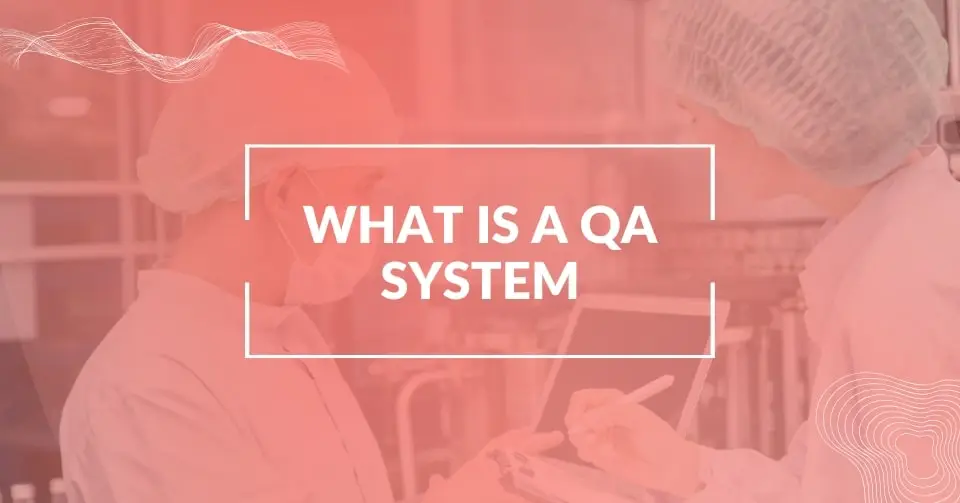Bacterial growth poses a significant challenge in food production. Harmful bacteria can multiply if not sufficiently controlled, leading to food spoilage, food poisoning, and compromised consumer safety. Maintaining strict control over microbial hazards is essential in manufacturing environments where large volumes of products move daily.
This article outlines the key factors influencing bacterial growth and provides detailed strategies for preventing contamination in food manufacturing settings. By focusing on practical application and science-based methods, food facilities can strengthen their food safety programs and reduce the risk of contamination.
Why Controlling Bacterial Growth Matters
Bacteria thrive under favorable conditions. According to the USDA, when food is held between 40°F (4°C) and 140°F (60°C), the “danger zone, bacterial cells can double in number every 20 minutes. This rapid multiplication can transform a slight lapse into a significant food safety event.
The World Health Organization (WHO) estimates that around 600 million people suffer from foodborne illnesses annually, with approximately 420,000 deaths. These statistics underline the importance of consistent bacterial control measures across all food preparation and storage stages.
Preventing bacterial contamination protects consumer health and safeguards companies against product recalls, legal action, and brand damage.
Factors That Influence Bacterial Growth
Research from the Journal of Microbial Food Safety identifies two main types of factors influencing bacterial growth:
- Extrinsic factors: Temperature, atmosphere, humidity
- Intrinsic factors: pH level, water activity, oxidation-reduction potential, and natural antimicrobials
Addressing these variables requires a strategic approach across all stages of production.
Key Strategies to Limit Bacterial Growth
1. Temperature Control
Managing temperature is the most critical barrier to bacterial growth.
- Refrigeration: Store perishable foods at or below 40°F (4°C); consistent cold storage slows bacterial metabolism and reproduction.
- Freezing: Keep frozen products at 0°F (-18°C) or lower. As the Food Industry Hub notes, freezing renders most microorganisms dormant.
- Cooking Temperatures: Cook poultry to an internal temperature of 165°F (74°C) and ground meats to 160°F (71°C) to destroy pathogens.
- Cooling Food Quickly: Foods must be cooled from hot holding temperatures to 40°F within two hours to prevent regrowth.
Temperature logs, sensor systems, and equipment calibration are essential practices to verify compliance.
2. Moisture Management
Bacteria need available water to multiply. Reducing moisture content can significantly limit growth. Aim to keep water activity below 0.85 through drying, curing, or using humectants.
Opt to use materials that prevent moisture ingress; vacuum packaging and modified atmosphere systems are effective. Monitoring water activity helps ensure that shelf-stable products remain safe during storage and distribution.
3. pH Control
Acidic conditions slow or prevent bacterial growth.
- Acidify Food Products: Maintain a pH below 4.6 by fermenting or adding food-grade acids like citric or acetic acid.
- Combine with Temperature Controls: Using low pH alongside refrigeration provides more substantial protection.
Routine pH monitoring supports product consistency and safety.
4. Hygiene and Sanitation
Effective cleaning practices reduce the likelihood of contamination.
- Hand Hygiene: Workers must wash their hands thoroughly and use gloves where required.
- Surface Sanitation: Clean and sanitize surfaces, tools, and equipment between uses, especially when switching between raw and ready-to-eat products.
- Biofilm Control: Regularly deep clean equipment to prevent biofilms, which can shield bacteria from standard sanitizers.
Even one lapse could lead to visible contamination in laboratory environments with critical sterile conditions in days. The margin for error is equally tiny in food production.
5. Preventing Cross-Contamination
Cross-contamination is a leading cause of foodborne illnesses.
- Physical Separation: Designate different areas for handling raw and cooked foods.
- Tool Management: Color-code utensils, cutting boards, and cleaning tools to prevent accidental transfer.
- Storage Practices: Store raw products below cooked and ready-to-eat items in refrigerators to avoid drips and spills.
Training employees to recognize cross-contamination risks is vital to maintaining safe practices.
Read our detailed guide about preventing cross-contamination with a risk-based approach to learn more.
6. Cooking and Processing Controls
Cooking destroys most foodborne pathogens when done correctly.
- Internal Temperature Checks: Verify that foods reach the proper internal temperatures using calibrated thermometers.
- Consistent Monitoring: Regularly inspect cooking equipment and maintain processing logs.
Uneven cooking can leave pockets where bacteria survive, making spot-checks and documentation essential.
7. Managing High-Risk Ingredients
Certain foods are more vulnerable to contamination.
- Identify Risks: Pay close attention to products like ground meats, leafy greens, soft cheeses, and unpasteurized dairy.
- Supplier Approval Programs: Work only with suppliers who meet high food safety standards and conduct regular audits.
Purchasing safe ingredients is the first line of defense against bacterial contamination.
8. Predictive Microbiology and Food Safety
Predictive modeling allows companies to forecast bacterial behavior under specific conditions. Tools like ComBase Predictor and the Pathogen Modeling Program simulate how bacteria react to temperature, pH, and humidity changes. Predictive models support better process design, accurate shelf-life estimates, and improved preventive controls. Predictive microbiology in daily operations reflects a shift toward proactive, evidence-based food safety strategies.
9. Digital Monitoring and Automation
Real-time monitoring enhances food safety by detecting issues early.
- Sensor Systems: Install automated sensors to track temperatures, humidity, and other critical control points.
- Immediate Alerts: Systems that notify supervisors of deviations allow quicker corrective action.
- Data Management: Digital recordkeeping supports compliance with HACCP and FSMA documentation requirements.
Technology reduces human error and improves oversight across production stages.
Stay One Step Ahead of Bacteria
Use FoodReady to prevent contamination before it starts.
10. Training and Food Safety Culture
A strong safety culture ensures that protocols are followed consistently.
- Continuous Education: Offer training sessions on foodborne pathogens, sanitation practices, and new safety technologies.
- Role of Leadership: Management must demonstrate commitment to food safety through actions, not just policies.
- Employee Empowerment: Encourage all employees to report potential issues without fear of retaliation.
Facilities with a strong safety culture tend to have fewer incidents and faster responses to potential problems.
Summary
Limiting bacterial growth in food is essential to ensuring product safety and protecting public health. Food manufacturers can significantly reduce contamination risks by controlling temperature, moisture, and pH and maintaining strict hygiene and sanitation practices. Incorporating predictive microbiology tools and real-time monitoring technology further strengthens food safety systems.
Consistent employee training and leadership commitment to a strong safety culture are key to success. A comprehensive, preventive food safety approach reduces operational risks and long-term liabilities.
Conclusion
Preventing bacterial growth requires a multilayered approach that addresses environmental, operational, and human factors. Key strategies include strict temperature and moisture control, acidification of products when appropriate, thorough sanitation practices, separation of raw and cooked foods, accurate cooking processes, careful ingredient management, and predictive models and digital monitoring systems.
Embracing scientific advancements like predictive microbiology strengthens preventive controls and enables facilities to anticipate risks rather than react to them.
Finally, fostering a culture of safety, backed by comprehensive employee training and leadership support, remains critical to ensuring lasting success in contamination prevention. Every action counts. With vigilance and adherence to these principles, food companies can protect their products, consumers, and brand reputations.








